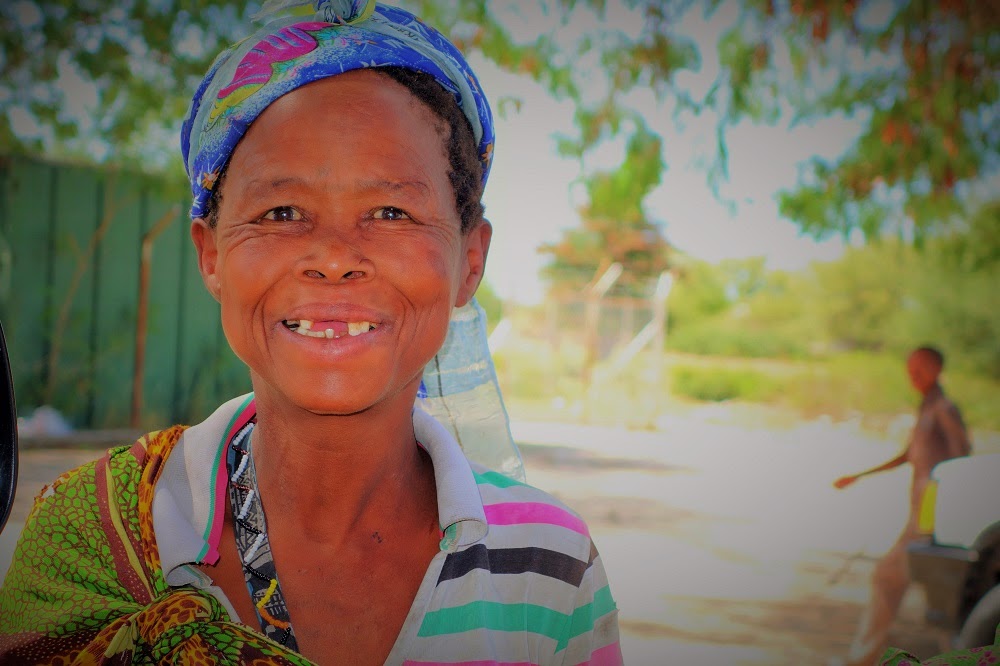We have just left Khaudum Game Reserve and are on the road
towards Etosha Game Reserve, traveling through the heart of Boesemanland (also
called Bushman land). This area is home to the largest remaining community of indigenous
Bushmen or San people who still live on their ancestral land, the Nyae
Naye Conservancy. The San people
occupied Southern Africa long before black and white settlers invaded their
territories. Most are still very traditional as they have only had contact with
western civilisation since the 1950s. There is archaeological evidence that San
people were present in Namibia as long back as 20,000 years ago and they left
evidence in the form of rock paintings.
Khaudum deserves a special mention since even before
entering it you feel some kind of awe. The guidebook describes it as ‘an
intense wilderness challenge’ mostly due to the deep sandy trucks and the fact
that there is no signage and you are mostly reliant on your GPS.
So we spent two full days meandering through deep sandy
trucks. Because of the tracks having been pre-formed by previous vehicles, you
swerve from side to side the whole time which at times feels like you are
swimming on the sand. Of course the boys loved it!
Luckily we didn’t get stuck once so none of the big toys
(winches, tow ropes etc) were needed. Nevertheless, it still took us all day to
travel from the northern entrance to the reserve to the southern exit,
travelling mostly in second year with the engine being tested to its limit.
We had plenty of
animal sightings, mostly elephant. In this park you keep a respectful distance
since there is no quick get-way due to the sandy tracks.
Before Khaudum we had stopped for two nights in a quirky
little camp on the Okovango River. It had a caged swimming pool immersed in the
river to protect you from the crocs and hippos so we had our first swim on this
trip.
As you enter the camp there are a couple of amusing signs:
And this one is for you Ed (says Don):
Und Tante Tillia das ist unser Hotel:
So now we are on our way to our last game reserve in
Namibia, Etosha.
For the last four days I have been totally deaf in one ear,
so the highlight of the trip so far has been having a goggo (small insect) ,which
must have climbed in and made a little nest in my ear, flushed out by a doctor
in a little town that we stopped at along the way. Phew, what a relief! It was
my right ear and since Don’s hearing isn’t great either, some of our dialogues
in the car were priceless!
Sunday 7th March Etosha Game Reserve
This morning we left Etosha after a couple of great days of
game driving. The highlight for both of us was literally stumbling (at low
speed, in our truck) on three adult young male cheetah as we turned a corner on
a fairly desolate track. The sighting literally took our breath away since
neither of us had ever been this close to a cheetah, let alone three. They were
not overly perturbed by us at all and were in no hurry to get away, so we had
the privilage of watching them for at least twenty minutes before they ambled
off into the bush. Amazing!
Unfortunately, Ian and Heather were on a different drive and
out of radio range so we couldn’t share the experience with them.
Etosha is mostly famous for its large salt pan, a dried up
saline lake covering an area of nearly 5,000 square kilometres. Thousands of
years ago the Kunene River would have fed the Etosha lake but now it has dried
up forming a gigantic salt pan, except for a few days a year when it is
converted by rains into a shallow lagoon teeming with flamingos and pelicans.
The view across this extensive expanse of desert flatness is truly incredible
and cannot really be captured by a photograph, but this is what it looks like
anyway:
 |
| From this point the pan stretches out for 130 km |
Etosha really is teeming with wildlife and apart from the
Cheetah we saw black and white rhino, a lioness and lion with a recently killed
zebra, plenty of giraffe and zebra and the usual assortment of game.
We are now making our way to the north western corner of the
country near the Angolan border before turning south along the skeleton cost.














No comments:
Post a Comment